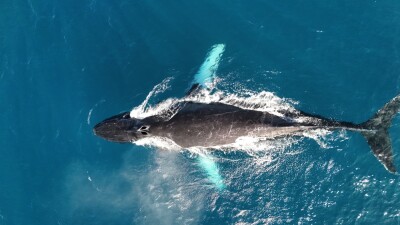The liability arising from negligent contracting or hiring of commercial UAS operators is very real as is the potential of employees operating their own UAS while on company business, whether authorized by the employer or not, and exposing their employer to non-owned UAS liability.
Being an Additional Insured under the operator’s policy, if they have one, only covers you for "Liability of the Named Insured" or operator. It does not cover you for your own negligence or liability arising from the hiring of that operator. Nor does it extend coverage or pay your defense costs or other losses for which you may be held liable such as lost revenue, lost earnings or wages, property damage or bodily injury caused by your hired operator to third parties. Non-Owned UAS hull and liability insuranceCorporate non-owned UAS liability insurance provides coverage to companies or individuals that use UAS that they do not own and that are operated by third parties such as hired commercial operators. These exposures are primarily contingent liabilities where the user does not employ the crew and is not directly involved with the operation and maintenance of the UAS. Who needs non-owned UAS liability protection?Any organization that hires or arranges for the use of a UAS that they do not own, even if they are only a passive customer, should consider carrying non-owned UAS liability insurance. What is contingent on-owned liability?Contingent liability exposure arises when coverage provided under the primary UAS policy is denied, invalidated or is not adequate to cover all parties resulting from dilution of limits.Nearly all UAS insurance policies contain warranties such as “approved pilots, “approved uses” and “approved territories”. If the operator breaches any of those policy warranties, coverage could be denied under the policy, not only to the operator, but also to the additionally insured party hiring them. Because an organization has no idea of the terms, conditions and warranties contained in a hired UAS operator’s insurance policy, they have no way of knowing or controlling whether the operator is conducting operations within the policy terms, conditions or warranties. Non-owned UAS liability coverage would respond to cover an organization in the event of a breach of warranty or denial of coverage under the primary policy by the operator.Another area of exposure is the dilution of limits. If a UAS operator carries $1,000,000 of third party legal liability coverage, the limit is shared by all parties. If a loss occurs and the operator is sued along with the organization hiring them, both parties would share that same limit and when the policy limit is exhausted, no more coverage exists to any party. Non-owned UAS liability coverage would respond to cover an organization in the event that the primary policy limit is exhausted as excess over the primary limit. Is the UAS being used by the operator, actually insured?UAS insurance policies require that each aircraft be identified and scheduled to the policy. Each aircraft carries its own limit and its own coverage’s much like a multiple automobile policy where each car must be insured. Before a commercial UAS operator begins working, you must ensure that the aircraft they are using is actually insured under the policy.Just because an organization is holding a certificate of insurance does not guarantee that the UAS the operator is using is actually insured under the policy. If the UAS is insured through Transport Risk Management, Inc./Unmanned Risk Management, you will be able to confirm the TRM number on the data plate affixed to the UAS. For example, if the insurance certificate shows that 2015 DJI Inspire, TRM1062, is an insured aircraft under the policy, there will be a data plate affixed to the UAS showing TRM1062. The data plate will also provide a phone number that can be used to verify coverage if there are any additional concerns. If that data plate is not affixed to the aircraft, then the aircraft being used is not insured under the policy. Non-owned UAS insurance will respond to cover an organization in the event that the operator is using an uninsured aircraft without provided no prior knowledge or permission. How likely is it that there will be protection under the owner's insurance policy for a "non-owner" permissive user or customer?It depends on the organization’s connection to the UAS owner, whether there are adequate limits and what the owner's policy says about protecting the hiring party. Is the organization responsible for hiring the UAS flight? If you are responsible for arranging or operating the flight, you most likely do not have protection for those exposures. How can I know if my organization is protected under the UAS operator’s insurance policy?You can't know for sure unless you read and understand the owner's policy. Some policyholders may not be sure about who is and who is not protected in their own policy. Some have confused being a permissive user, customer or an approved pilot with being included for liability insurance protection. Such may not be the case, especially for persons working in commercial aviation or the business of arranging UAS flights on behalf of others. Can my organization buy insurance to cover non-owned hiring or use of UAS?Yes, if qualified, coverage is generally available for all uses:- For Corporations - Corporate Non-Owned UAS Liability Insurance
- For individual licensed renter pilots - Personal Non-Owned UAS Liability Insurance















Comments